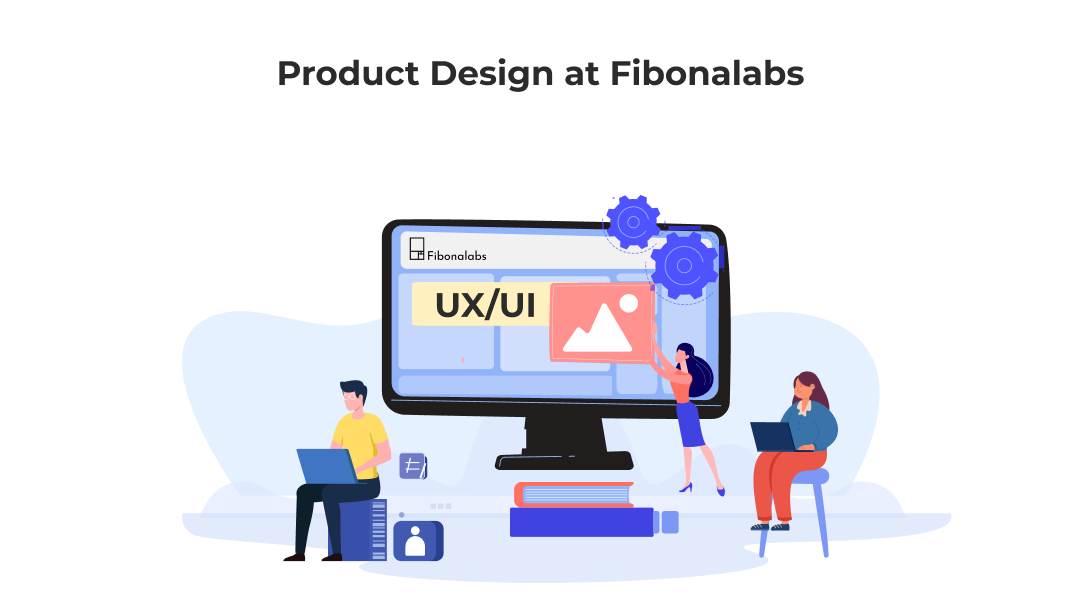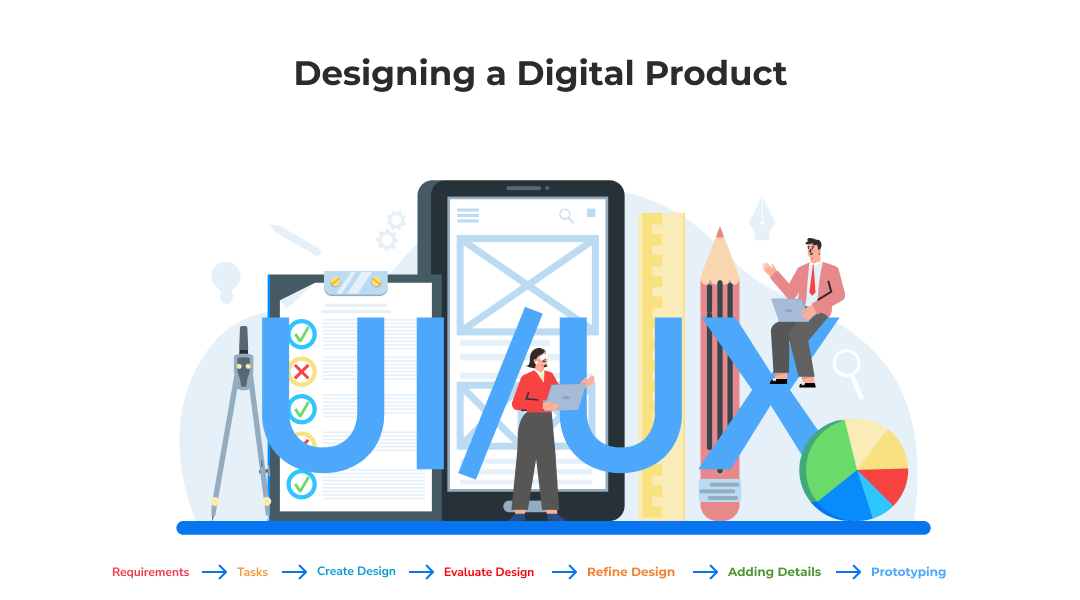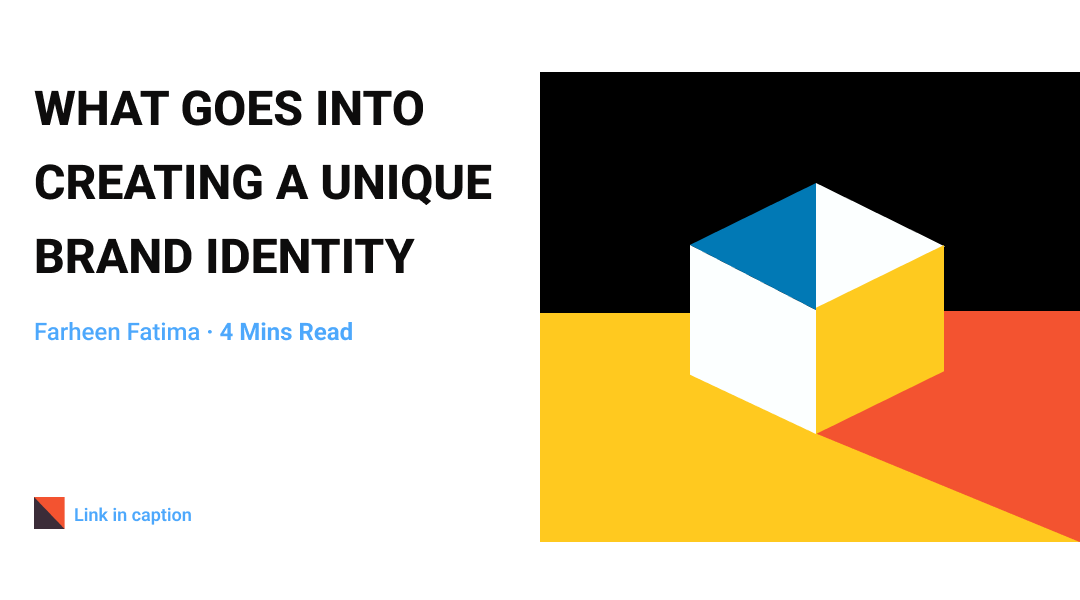How Do We Design A Digital Product From Scratch At Fibonalabs
Digital product design is of utmost importance as it plays a vital role in increased customer usage, customer satisfaction, revenue, and so much more. At Fibonalabs, we have skilled and experienced designers who put their best foot forward to come up with extraordinary designs.
Before jumping directly to the design part, we first try to understand what the client wants from us. Then we focus on different use cases followed by the creation, evaluation, refinement, and detailing of the design.

Process of UX design for digital products at Fibonalabs
- Understanding Requirements: The initiation of the process consists of learning the business needs, user expectations, and technical capabilities. User expectations are captured by conducting user research. Discovering the user tasks, observing user behaviour, contextual studies and analysis help us frame the primary needs.
- Identify Tasks/Scenarios: Create user personas and identify the tasks the users will be performing. The primary functional tasks allow us to prioritize the features of the product. This helps in creating the information architecture, the task flows and eventually the wireframe concepts.
- Creating Design: As a part of the process, multiple concepts of the screens are designed. Various layouts, interactions, features, and basic visuals are explored and evaluated.
- Evaluate Design: Once several design concepts are put down, it is scrutinized at different levels. The designs are subjected to scrutiny by the team members and the team mentor, multiple reviews are carried out based on internal feedback. Once a set of concepts has validated a review with stakeholders is done to discuss the feasibility, scalability and visibility of each concept.

- Refine Design: Get feedback on the designs and perform iterative improvements. This process of designing-evaluation-redesigning is a short-closed circuit which repeats until an optimal solution is formed. This is essentially the core of the product designing activity. Early feedback cuts down the massive costs of launching a product and then having to go back to the board.
“Research by The Systems Sciences Institute at IBM has found that the cost of correcting a mistake discovered after a product hits the market is between four and five times as costly as fixing one spotted during the design phase”.
- Detail Design: The design framework of the product is established based on the selected design. Wireframes are transformed into visual design screens. The visual design is also subjected to the same process of designing - evaluating - redesigning based on the company’s branding and stakeholder requirements.
- Create Rapid Prototypes: Before passing over the UI specifications and visual design to the development team, a fully functional prototype of your product can be created. This would include all the interactions, animations etc. which help give a better understanding of the product and more importantly for internal production testing and usability testing.
Conclusion
Digital product design takes a lot of effort as it is not about touch and feel but about look and feel. By looking at details, performing proper market research, and conducting thorough product analysis, we always try to stay ahead of the game.



